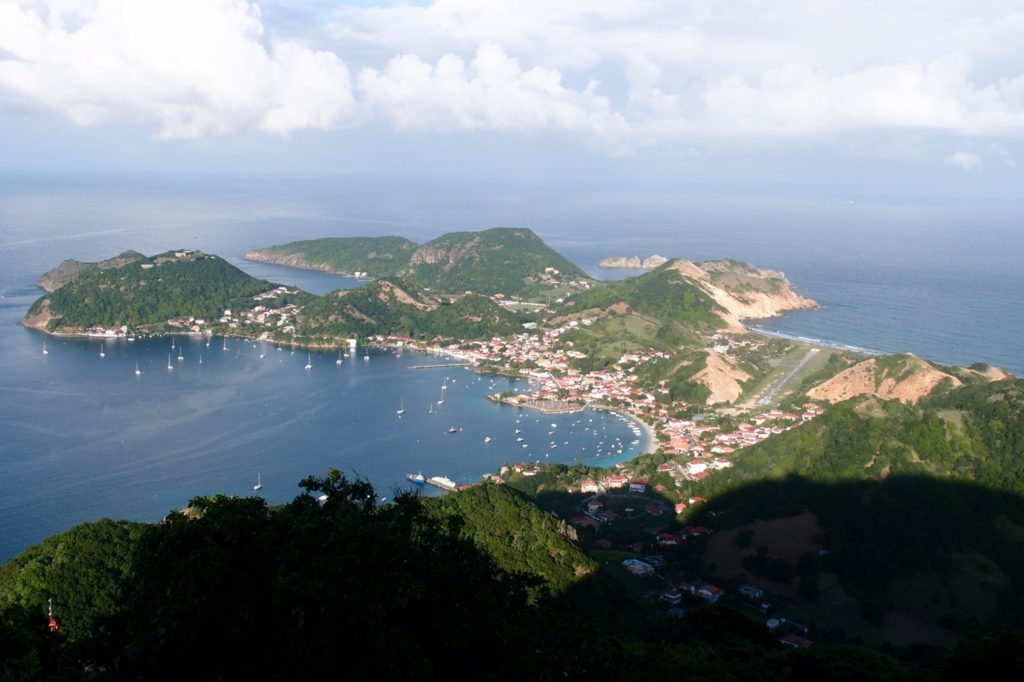
The tenth GEOTREF PhD has been defended by Gildas Beauchamps at 9 am, the 10th December 2019, in the Cergy-Pontoise university: Characterization of an exhumed high temperature geothermal paleo-system , by the study of clay minerals and goethermomtry on quarts and chlorite (Terre-de-Haut, Les Saintes archipelago, Guadeloupe.
| PhD directed by: | |
| Mrs. Béatrice Ledésert | Professeure à l’Université de Cergy-Pontoise |
| Mr. Ronan Hébert | Maître de conférence à l’Université de Cergy-Pontoise |
Examiner:
| Mr. Jean-Marc Lardeaux | Professeur à l’Université de Nice |
| Mrs. Patricia Patrier | Professeure à l’Université de Poitiers |
Member:
| Mrs. Chrystel Dezayes | Ingénieure, BRGM |
| Mr. Michel Dubois | Professeur à l’Université de Lille |
| Mr. Albert Genter | Directeur Général Adjoint, ES-Géothermie |
| Mr. Sébastien Haffen | Ingénieur, Teranov |
Abstract
Due to its geodynamic location on the Lesser Antilles arc, Basse-Terre of Guadeloupe displays an active volcanism which is favorable to the development of geothermal energy associated to power generation. Thus, thirty years ago, the Bouillante geothermal field was brought into production and now produces 15 MWe (Bouchot et al., 2010).
The GEOTREF program (a multidisciplinary platform for innovation and demonstration activities for the exploration and development of high geothermal energy in fractured reservoirs) funded by ADEME in the frame of “Les Investissements d’Avenir” program, aims to investigate the high enthalpy geothermal potential in the Vieux-Habitants area, located south of Bouillante. However, because of recent volcano-clastic deposits, surfaces showing the presence of a geothermal reservoir are rare. Terre-de-Haut island (Les Saintes archipelago) is considered as an exhumed analog of the deep geothermal system of Bouillante (Verati et al., 2016) which represents a key area to study the paleo-hydrothermal alterations. To characterize the paleo-hydrothermal alterations in terms of composition and temperature, and to determine the mineralogical and petrographic features of the paleo-hydrothermal alterations, we propose to couple petrographic, crystallographic, geochemical and geothermometric approaches, i.e. X-ray diffraction (XRD), microprobe analysis (EMPA), chlorite thermometry and in-quartz fluid inclusion study (FI) on selected samples. A link is also established with the petrophysical properties of the altered.
The clay minerals display a specific concentric distribution at the scale of the island, with chlorite crystallization in the core, smectite in the surroundings, and illite in an intermediate halo. Considering the data obtained in boreholes in Bouillante, which show that illite and chlorite are in the deeper parts, chlorite being located in the heart of the geothermal reservoir (Bouchot et al., 2010), the clay distribution allows to identify the temperature profile. Hence, thanks to the exhumation, we are looking to a horizontal section through the paleo-system of Terre-de-Haut, where we observe a lateral temperature gradient.
Chlorite geothermometry, based on a model specifically developed for low temperature contexts (T < 350°C) and pressures below 4 kbar (Bourdelle et al., 2013), has been applied on chlorites from both Terre-de-Haut paleo-system and from the active geothermal system of Bouillante. The results show a strong difference between the temperature estimates for chlorite formation on Terre-de-Haut (around 120°C) and for Bouillante (around 230°C, in agreement with the temperature measured in boreholes in Bouillante; Mas et al., 2006).
Fluid inclusions microthermometry on quartz show two growth stages recorded in the crystal core and clear overgrowths. Data indicate very low salinity (< 2% NaCl), and a minimum trapping temperature of around 250-280°C in inclusions located in the core, and around 70°C or less in the outer growth zones. These two events can be interpreted as a record of the fluid cooling during system evolution. Moreover, fluid inclusions from a second quartz sample indicate a shallow CO2 paleo-circulation episode.
This study shows that the clay mineral zonation cropping out in Terre-de-Haut is similar to that found by drilling in the active system of Bouillante. However, the temperatures of formation of some newly formed minerals (especially chlorite) indicate that some alteration episodes occurs at lower temperature than the fluid circulation occurring in Bouillante’s active geothermal system and could represent the end of life of the Terre-de-Haut geothermal system.
Hence, these results show that clay minerals study and geothermometry of newly formed minerals (chlorite and quartz) are key steps to provide new thermal constrains on the paleo-geothermal reservoir of Terre-de-Haut and its evolution, particularly the end of life of the geothermal system.
Keywords: Hydrothermal alteration, Clays, Geothermometry, High-temperature paleo-geothermal system, Guadeloupe, GEOTREF
